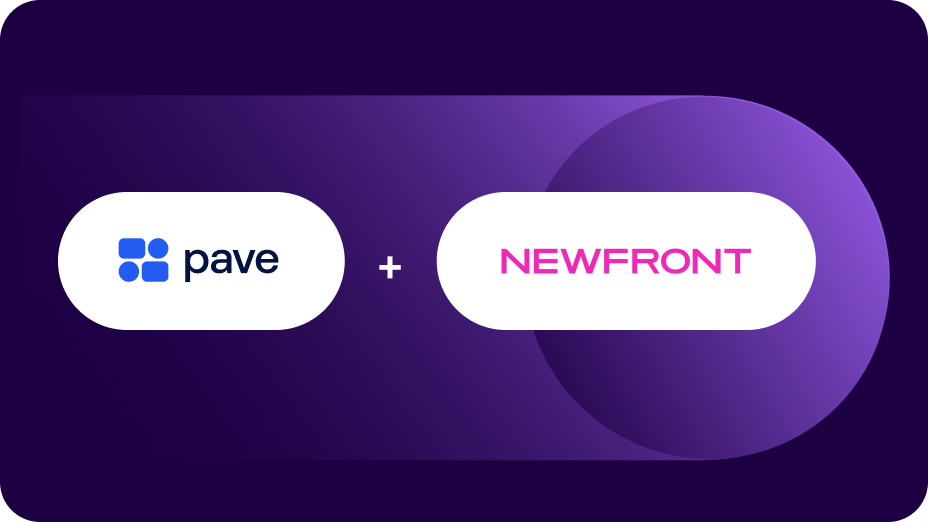Virtually every organization has issues with fairness.
The field of diversity, equity, and inclusion (DEI) has reached a social tipping point in recent years. Numerous public injustices have brought to the fore just how much more work companies still have to do to fix their outdated standards and practices in human resources.
In celebration of Black History Month, we wanted to share several patterns, insights and data we’ve observed in the world of compensation as it relates to underrepresented populations.
We hope our ideas inspire your company to make progress in the face of bias and build a more diverse and equitable organization.
The Reality of Hiring Bias
In a recent Pave Data Lab post, our numbers revealed that, among startups with a hundred employees or more, only 36% of the workforce is female. A deeper assessment of our data indicates that as companies mature, they become more balanced.
Consider such data, your people team has the opportunity to think about how to reconcile the gender disparity before your growth fully accelerates. Remember, if you don't have data driven comp information, you could be set up to discriminate more and empower less.
Pamela Fuller, FranklinCovey’s chief thought leader on inclusion and bias, recently published an eye opening book called The Leader's Guide to Unconscious Bias.
She points out that bias is a natural part of the human condition and how our brains work. To be human is to have bias, she writes, and uncovering and understanding our biases are the first steps to ensuring that our behavior does not limit our possibilities or the possibilities of those we work with:
“Today addressing bias has transformed into one of the most important topics for individuals, communities, and organizations to confront. Being truly unbiased is impossible, because we’re human and have all been influenced by our past. And while we continue to make significant progress, like many organizations, we recognize this is an ongoing, never ending effort, and we still have a ways to go."
Fuller’s research shows while bias is inherently human, it can also inhibit decision making, performance, innovation, and results in the workplace. And the first step is both accepting, but also acting on that biased reality.
When organizations use data, not just instincts, for hiring criteria, they take a stand for equitable compensation.
If you want to take the lead in reducing bias by making pay fairness a differentiator for your employer brand, this is your first step. Having a defined framework helps move decisions on compensation away from gut instinct and towards a consistent process.
Is your company tracking and reporting on the diversity of your team? Are you holding your organization accountable for building an inclusive culture that is set up for long term success?
How Unfairness Builds Negative Momentum
One reason Pave is so passionate about the category of CompTech is that companies finally have platforms to give a consistent narrative with every detail and every employee. The right data, and the best tools to communicate it, ensure that everyone at the company is on equal footing, regardless of race, gender, age, orientation, and so on.
Unfortunately, small inequities only get bigger over time. Particularly those at the offer stage.
With stock options, for example, if there’s unfairness in the offer to a candidate who’s part of an underrepresented minority, and the company valuation rises, that original number becomes unfixable. Which means every time that individual sees it, it’s another reminder of that original compensation injustice.
Another common expression of systemic unfairness is the culture of silence around compensation. This communication failure is a key contributor to pay inequity. Understandably, compensation is an inherently technical, often ambiguous subject. How much people get paid is a serious issue that involves human beings’ livelihoods.
But we can no longer afford to be afraid of talking about compensation in an honest, direct and open way.
In the book Hiring for Diversity, with authors who are both renowned LGBTQ+ and DEI researchers, we learn that imposing a culture of silence around salaries only pushes the issue underground.
Speaking up about compensation is a key way to help expose and alleviate systemic pay inequity:
“In sharing a clear salary range, you signal that your firm values pay equity. This can give a job seeker added comfort and assurance to get involved with your organization. If you come out and say, 'this is what our salary is, these are the ranges,' that's going to build trust. Which is especially beneficial when trying to recruit women and people of color.”
Thankfully, compensation transparency is fast becoming a regulatory norm.
More and more institutions are recognizing that when it comes to something as important to employees as their compensation, being opaque is a recipe for attrition. They know talented people have all sorts of options, and if they’re not presenting the opportunity in the best way possible, competitors will scoop those candidates right up.
What if your company took the extra step and posted salary ranges in your job descriptions? Would that enhance your fair pay brand and neutralize the discomfort candidates feel around early salary negotiations?
The Evolving Role of People Operations
What’s exciting about the evolving field of human resources is, innovative companies are starting to view it as a profit center, and not a back office cost center. We feel fortunate to build tools that enable people ops teams to focus less time on tracking their employees, and more of their time on making people’s lives easier and empowering them to do their best work.
There’s a seismic shift going on around how organizations view this department. Elevating the credibility of the human resources function is a mission worth fighting for.
Certainly, it’s everyone’s job at the organization to champion equitable treatment, but if there was any team that was positioned to champion diversity, equity and inclusion, it’s people ops.
If you’re a human resources professional in any capacity, we’re counting on you to lead the fight against unfairness.
Diversity, equity, and inclusion have become normal components of the organizational lexicon, and Pave will be here every step of the way to help you make progress in the face of bias and unfairness.
Pave is a world-class team committed to unlocking a labor market built on trust. Our mission is to build confidence in every compensation decision.





.jpg)
.jpg)

